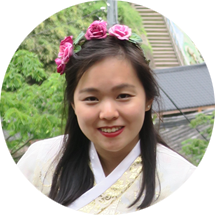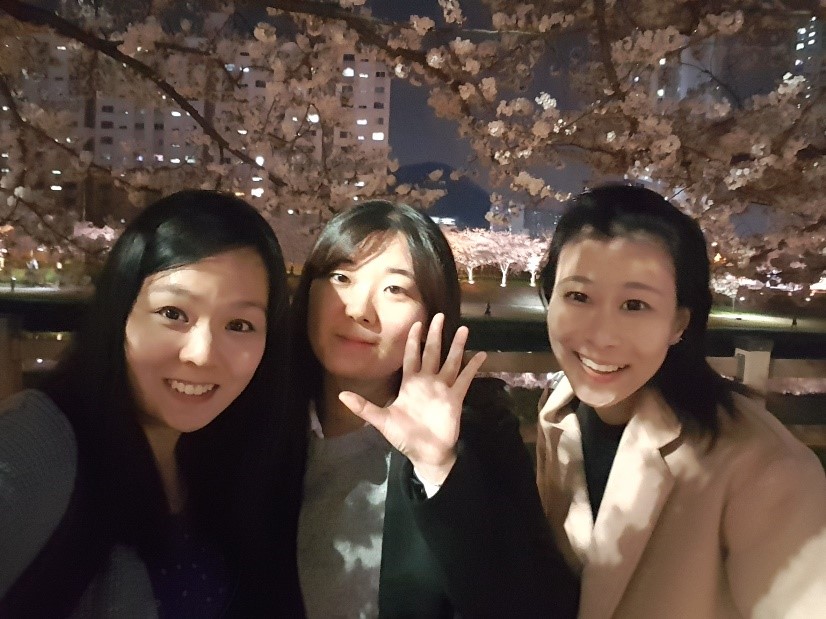Teo Mindy

Class of 2018
Majoring in Psychology and Corporate Communication
Overseas Exchange at Pusan National University, South Korea
“Are you going to take the TRAIN to Busan?”
With reference to the Train to Busan zombie apocalypse action thriller released in mid-2016, ‘Train to Busan’ jokes usually abound whenever I told my peers that I was going to Pusan National University for exchange in the spring semester.
While South Korea is considered a popular destination for exchange among SMU students, most people would be gunning after the top universities in Seoul, as Seoul is the city they’ve heard so much about – K-pop, K-dramas, K-reality shows like Running Man, food, cosmetics, fashion and so on. Although Busan is the second largest city in Korea, it is undoubtedly a lot more underrated than its more populous, fast-paced sister.
Similar to the SMU ICON Buddy Programme, Pusan National University also has its own buddy programme where exchange students can receive one-on-one assistance from a fellow PNU student. As arranged beforehand, my assigned buddy waited for me at the Busan KTX Station before taking me to the school dormitory. Dragging a bulky suitcase in hand, I hastily downloaded the Busan Subway map app.
Upon setting foot in Busan, the first thing that struck me was how it exudes a vibe that is different from that of Seoul. It is less rushed and has a more laidback feel. Unlike the complicated Seoul Metropolitan Subway consisting of nine different metro lines, the Busan Metro has only four lines. I heaved a sigh of relief as I noted that all directional signs on the Busan Metro are written in both Korean and English. Just a word of advice, if you are not a huge fan of crowds, you might just prefer Busan to Seoul.
Overcoming the Initial Language Barrier
Language itself was a barrier I had to overcome. As I could barely speak a word in Korean or understand Hangul characters before coming on exchange, I had difficulty finding my way around and understanding how things work on my first four weeks in Korea. Google Translate was my newfound best friend during the early weeks as I could take a picture of the unfamiliar Hangul characters and have them translated into English words with a few swipes. However, I soon realised that Google Translate has its limitations as each syllable of Korean represents a multiple of characters in Chinese that each have their own meaning. While the Chinese writing system has thousands of different characters and a few intonations to differentiate, Koreans use a single phonetic system that is easy to learn but creates much overlap. For instance, 사과 (sagua) can mean either apple or apology in Korean depending on the context.
Settling in meant that I had to adapt quickly to life in the dormitory. It is the simplest things, like differentiating detergent from bleach, knowing how to operate the washing machine and room heater, signing up for a bank account and using the bank card, and figuring out how to use Microsoft Word (the Korean language version) on the printing room computer that soon became challenging for me. Immersed in foreign surroundings amidst an unfamiliar language, I felt first-hand the exasperation of having to do everything “in foreign“. As such, I challenged myself to pick up some Hangul reading skills and basic conversational Korean language proficiency by the end of the semester.
Thankfully, PNU offers a multitude of Korean language classes for learners of all levels – ranging from Beginners Korean 1 and 2, to Intermediate Korean and Advanced Korean. I enrolled myself in the Beginners Korean 1 class as I had close to zero background in the language. However, I chose not to map back the module as a General Elective back at SMU to take pressure off the learning process.
I also joined a student club called the PNUF (short for ‘PNU Friends’) on Tuesday and Thursday nights where I picked up some conversational starters and useful everyday life Korean phrases from a local PNU student. PNUF meetings are usually held in an informal setting where we get to meet our Korean ‘teachers’ in a pair or small group of no more than five other exchange students. Because the meetings are flexible, we sometimes even choose to hang out outside school during the supposed club hours!

My fellow exchanger and I went Cherry Blossom viewing at Oncheon Stream Park with our PNUF teacher, Sally (middle), during the Cherry Blossom week in early April.
I would also like to point out that because I am Asian, many PNU students would automatically assume that I am a local and speak to me in Korean first, before realising that I am actually a foreigner when I would simply smile politely at them.
Classes Taken

The beautiful garden outside the Social Sciences building at PNU.
As a Psychology major, I was assigned to the Social Sciences faculty at PNU. However, as there were no Psychology courses in English offered in the semester I was there, I took the opportunity to take a Social Science Major Related (SSMR) course – Rising Powers in Asia – which was offered under the Global Studies faculty instead. The course centres on the comparative politics of two major powerhouses in Asia, China and India, and the weekly topics examine how they view each other’s rise in various areas vis-à-vis how other middle powers in Asia view them.
Classes at Pusan National University are typically split into two blocks of 75-minute lessons each week. Instead of seminar-style discussions that we are all used to at SMU, classes here at PNU are more of lectures held in a classroom environment as the Korean students tend to remain silent rather than speak up when the professor is inspiring to them, perhaps out of deep respect for the age hierarchy in Korea. An anomaly observed was in the Negotiation class that I took, as it was a hands-on class where we were given hypothetical companies to represent each week and we had to negotiate the best deal outcome for our team. Another interesting elective I took would be the Fitness Management class as I learnt in-depth about the types of physical activities that are beneficial for the different muscle groups and metabolic fitness, and got a hands-on approach in designing my very own fitness regime based on the principles learnt and carrying it out independently outside class for a month! I was also thankful to enrolled in International Business and Special Topics in International Economics (which were mapped back as GRS and IEA respectively) at PNU. It was refreshing to see how lessons were conducted in Korea universities.
Places Visited
Everyday life studying at PNU is certainly more relaxed than in Singapore. With proper planning, I was able to squeeze a 4-day school week, and used the remaining 3 days to travel around. In my free time, I explored hidden gems around Busan and visited many neighbouring cities and provinces such as Daegu, Ulsan, Gyeongju, Gwangju, Jeonju and Jeju. Due to Busan’s proximity to Japan, I also seized the relatively cheaper airfare to visit Japan at the end of the semester. In total, I visited 26 cities/provinces/prefectures across the two countries during my semester abroad.
Of the places visited, perhaps the most memorable would be the Demilitarized Zone (DMZ), a strip of land running across the Korean Peninsula that separates North and South Korea. Within the DMZ is a meeting-point between the two nations in the small Joint Security Area near the western end of the zone, where negotiations take place.
Another memorable experience would be the treacherous hike up Mount Hallasan, the tallest mountain in South Korea when I was at Jeju. With no prior hiking experience, Amirah, a fellow SOSS student, and I took about 8.5 hours to trek up and down the tallest mountain in Korea.
I find it amusing that despite the physical endurance and agility required, hiking is often seen as an “old people activity” in Korea as one can easily spot more older people (Ahjummas and Ahjusshis) conquering the national parks here. Young people, on the other hand, prefer to chill out in shopping malls or the numerous cafes that line the streets everywhere. I thoroughly enjoyed my hiking experience at Hallasan, and went on to conquer another national park – Wolchulsan. With my limited Korean proficiency, I was able to communicate with some of the Ahjummas and Ahjusshis who were more than surprised to see a young folk like me out conquering Korea’s mountains.
Lessons Learnt and Final Thoughts
Cliché as it sounds, spending a semester abroad has made me realised that there is more to life than the paper chase in Singapore. All too often, many Singaporean millennials like myself can be too ambitious for our own good – be it chasing after a better grade, internship, or leadership position – that we fail to take a breather. Coming on exchange has enabled me to slow down and live in the moment.
Although the initial language barrier may be challenging, the satisfaction gained from not knowing a single word in Korean initially to being able to write in Hangul characters and read the street signs is extremely rewarding. While I may not be fully conversant in Korean yet, I look back in amazement at how far I have progressed in my learning of the language within the span of 15 weeks in PNU. For those who contemplate about going on exchange in a country where the first language is not English, I would strongly encourage you to just GO FOR IT! Get out of your comfort zone and experience the struggle with picking up a different language, you may just find yourself doing much better than you expect to be!
While Busan may be a small port city in the South, it is definitely one you would love returning to and have come to call your second home after many weekend trips travelling around Korea!